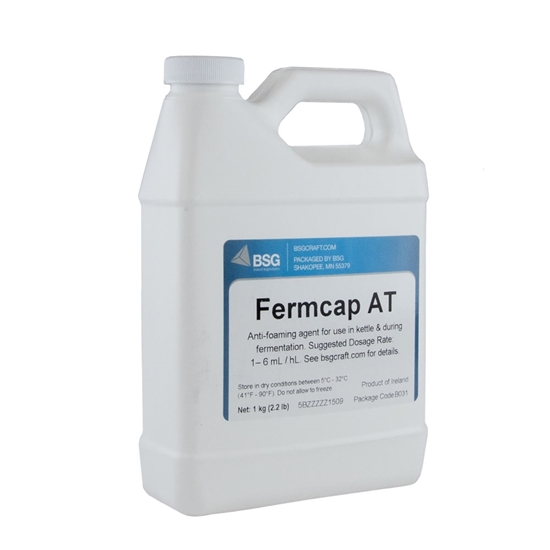Finest Practices for Picking the Right Anti-Foam Control Option for Your Demands
Picking a reliable anti-foam control service requires a detailed examination of your unique operational demands. Key considerations include the details properties of your process, such as temperature level, chemical, and ph communications, all of which dramatically affect the performance of defoaming representatives.
Understand Your Foam Problem
Frequently, companies come across foam-related problems that can prevent functional performance and item quality. Foam formation can happen throughout various processes, consisting of mixing, fermenting, and transport, and it often brings about equipment inefficiencies, manufacturing downtime, and raised operational prices. Comprehending the underlying sources of foam generation is crucial for resolving the problem efficiently.
Foam can occur from several factors, such as the nature of the products included, anxiety degrees, temperature level variations, and chain reactions. Specific surfactants can aggravate lathering, while high shear blending can introduce air, leading to undesirable foam accumulation. In addition, environmental problems and the particular features of the liquid systems in operation can significantly influence foam actions.
By examining these variables, organizations can obtain understandings into their foam problems, enabling them to develop targeted techniques to reduce foam development and improve general process efficiency. This fundamental understanding is essential for picking an ideal anti-foam control remedy tailored to details operational demands.
Assess Anti-Foam Options
When considering anti-foam choices, it is essential to thoroughly assess the different solutions available on the marketplace to find the most appropriate option for your particular foam-related obstacles. Anti-foam agents been available in varied kinds, including silicone-based, non-silicone, and all-natural solutions, each offering distinctive properties and performance characteristics.
Begin by evaluating the details application requirements, such as temperature limits, pH levels, and the kind of foam being produced. Silicone-based representatives are known for their performance in high-temperature environments, while non-silicone options might be better in food processing applications due to regulatory considerations.
It is likewise vital to consider the rate of application and the wanted longevity of the foam control. Some solutions might supply prompt defoaming activity, while others use prolonged security. Conducting small examinations can supply understandings right into the efficiency of each alternative in real-world conditions.
Take Into Consideration Application Compatibility
In the world of anti-foam remedies, making sure application compatibility is extremely important for accomplishing optimum efficiency. The efficiency of an anti-foam agent largely relies on its capability to operate harmoniously within the certain criteria of your application, consisting of temperature, pH, and the existence of various other chemicals. Different formulations may do variably throughout diverse conditions, therefore comprehensive screening is important.
Begin by identifying the features of your procedure, such as thickness and the nature of the tool in which the anti-foam will certainly be utilized. For example, some anti-foam agents might work well in liquid services however stop working in natural solvents. In addition, take into consideration the possible communications with existing ingredients and materials to avoid undesirable impacts.
It is also crucial to assess the approach of application. Whether the anti-foam is presented constantly or batch-wise can affect its efficiency and durability in the system. Guarantee that the selected product is not just compatible with the functional criteria yet additionally lines up with any type of governing needs pertinent to your industry.
Assess Environmental Impact
How does the ecological effect of an anti-foam control option influence your overall selection procedure? The environmental footprint of your chosen anti-foam agent is paramount, as it mirrors your dedication to sustainability and regulative compliance. Choosing a product with marginal ecological consequences can enhance your business image and foster customer trust.
When assessing environmental impact, think about the biodegradability of the anti-foam option. Solutions with high poisoning can pose considerable threats to neighborhood environments, potentially resulting in regulative penalties and ecological degradation.
One more important variable is the visibility of harmful compounds. Anti-foams including harmful chemicals might demand special delivery and disposal measures, making complex and boosting functional expenses compliance with ecological policies. Selecting eco-friendly alternatives can reduce these threats.
Screen and Optimize Efficiency
To maximize the performance of your anti-foam control remedy, it is necessary to consistently check and optimize its performance. Constant assessment allows for the recognition of any type of deviations in foam levels and the succeeding effectiveness of the anti-foam representative.
Execute an organized approach to check crucial efficiency signs (KPIs), such as foam volume, security, and the response time of the anti-foam representative. Make use of analytical tools and techniques, such as visual inspections, foam height measurements, and specialized sensors, to collect exact information.

Additionally, Home Page preserve open interaction with vendors for technical support and understandings on the most current improvements in anti-foam modern technology. This aggressive strategy not only aids in achieving optimal performance however likewise lessens operational interruptions and improves total process effectiveness. On a regular basis revisiting and improving your anti-foam approach ensures that you are effectively managing foam-related difficulties, inevitably causing enhanced efficiency and price financial savings.

Verdict
To conclude, choosing the ideal anti-foam control service necessitates a thorough assessment of certain application needs, consisting of temperature, pH degrees, and chemical compatibility. Rigorous testing for prompt and prolonged defoaming effectiveness is important, as is factor to consider of environmental effects and governing compliance. visite site By focusing on green alternatives and continually checking efficiency, operational effectiveness can be improved while successfully reducing foam-related difficulties. Abiding by these finest techniques will help with enlightened decision-making in anti-foam control solutions.
Selecting a reliable anti-foam control service necessitates a detailed analysis of your special functional needs.In the world of anti-foam remedies, ensuring application compatibility is paramount for attaining optimal efficiency.Just how does the environmental effect of an anti-foam control service influence your general choice process?In final thought, selecting the suitable anti-foam control service demands an extensive analysis Get More Info of certain application requirements, consisting of temperature level, pH degrees, and chemical compatibility (Anti-Foam Control Solutions). Adhering to these ideal techniques will facilitate informed decision-making in anti-foam control solutions
Comments on “Anti-Foam Control Solutions-- Maximize Manufacturing with Expert Foam Control”